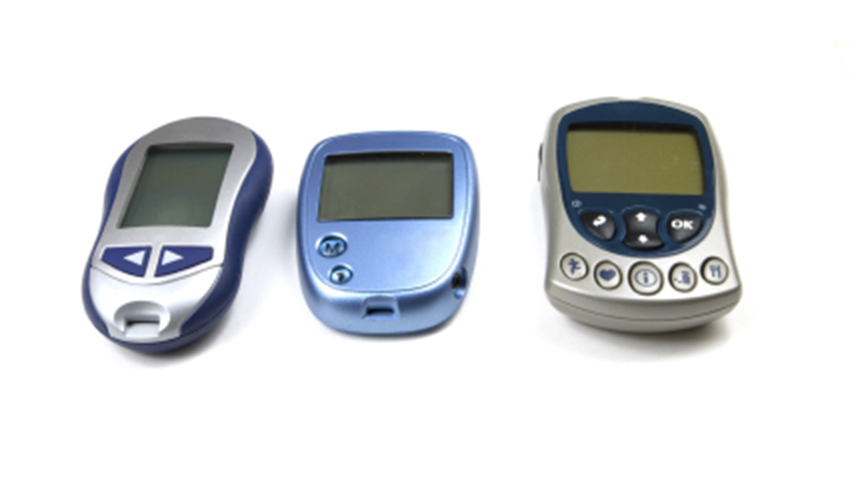-
Glycemic Index
The glycemic index is a value assigned to foods based on how slowly or how quickly those foods cause increases in blood glucose levels. Foods low on the glycemic index (GI) scale tend to release glucose slowly and steadily. Foods high on the glycemic index release glucose rapidly.
-
Loading the player...
Glycemic Index and Blood Glucose Levels Sarah Ware, B.Sc.(Hons), Professional Dietician RD, CDE, discusses Glycemic Index and Blood Glucose LevelsSarah Ware, B.Sc.(Hons), Professional Dietician RD, CDE, discusses Glycemic Index and Blood Glucose Levels -
Loading the player...
Healthy Carbohydrates for Glycemic Control Sarah Blunden, P.Dt, CDE, CPT, Professional Dietitian, talks about how to eat healthy carbohydrates for a good energy sources and improved glycemic control.Sarah Blunden, P.Dt, CDE, CPT, Professional Dietitian, talks about how to eat healthy carbohydrates for a good energy sources and improved glycemic control. -
Loading the player...
Understanding glycemic index and food choices in diabetes Dr. Akshay Jain, MD, FRCPC, FACE, CCD, ECNU, DABIM, DABOM, Clinical and Research Endocrinologist talks about how understanding glycemic index can help improve your diabetes.Dr. Akshay Jain, MD, FRCPC, FACE, CCD, ECNU, DABIM, DABOM, Clinical and Research Endocrinologist talks about how understanding glycemic index can help improve your diabetes.
-
Glycemic Index and Blood Glucose Levels
The glycemic index was a concept that was introduced by Dr. David Jenkins out of the University of Toronto. It’s a concept that categorizes food on how quickly it causes a rise in blood sugar once ingested. They categorize foods whether they are high glycemic or low glycemic, and it’s interesting to note that foods like white bread or potatoes actually cause a faster blood sugar rise than a food like regular table sugar. Often seeing a local family physician or a physiotherapist in conjunction with a registered dietitian and athletic therapist is a great option to take control of this condition.Smart Food Now and exercise is also optimal for overall health. So when you’re choosing your meals, for example if you wanted rice for dinner, try to choose wild rice over white, and when it comes to fruit, choose blueberries over watermelon.
If somebody has more questions about the glycemic index, they should speak with a local dietitian, certified diabetes educator or a diabetes specialist. Presenter: Ms. Sarah Ware, Registered Dietitian, North Vancouver, BC
Now Health Network Local Practitioners: Registered Dietitian
-
Glycemic Index and Blood Glucose Levels
Glucose is a type of sugar we get from foods, and as it travels through the bloodstream to the cells, it’s called blood sugar or blood glucose. Glucose is found mainly in foods rich in carbohydrates, like fruit, bread, pasta and yogurt. The body uses glucose for energy. Insulin is a hormone in the body that moves the glucose from your blood into the cells.
If you have type 1 or type 2 diabetes, you either can’t produce insulin or can’t use it properly, and glucose builds up in the blood. Blood glucose monitoring is an important part of any type 1 or type 2 diabetes management plan. If you have diabetes, it’s important to check your blood sugar levels as prescribed by your doctor. This will determine if you have low or high blood sugar and show you how your medication and lifestyle are affecting your blood sugar levels.
The goal of blood glucose monitoring in diabetes is to keep your blood sugar as close to target range as possible. To do so, you need to eat healthy foods and stay active. Some patients also require diabetes medications. You’ll work with your primary care provider or endocrinologist to determine how often you need to check your blood sugar levels.

You’ll need to get a blood glucose meter from your pharmacist or diabetes educator and learn how to use it. A traditional blood glucose meter uses lancets to puncture your skin, drawing a drop of blood that you then test on a blood glucose strip. A flash glucose meter (FGM) is a newer device that doesn’t require you to prick your finger – it uses sensor scans. Some people use a sensor inserted under the skin, called a continuous glucose monitor (CGM), to check blood sugar levels.
Presenter: Sarah Ware, B.Sc.(Hons), RD, CDE, Registered Dietician


